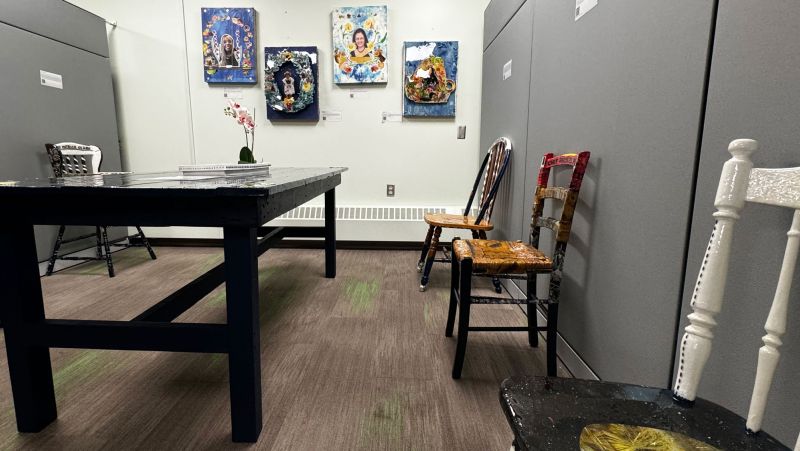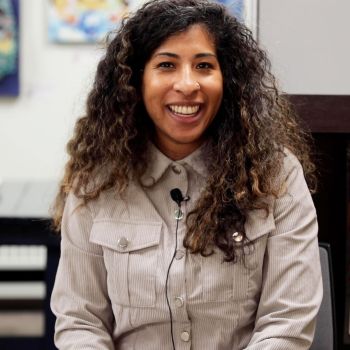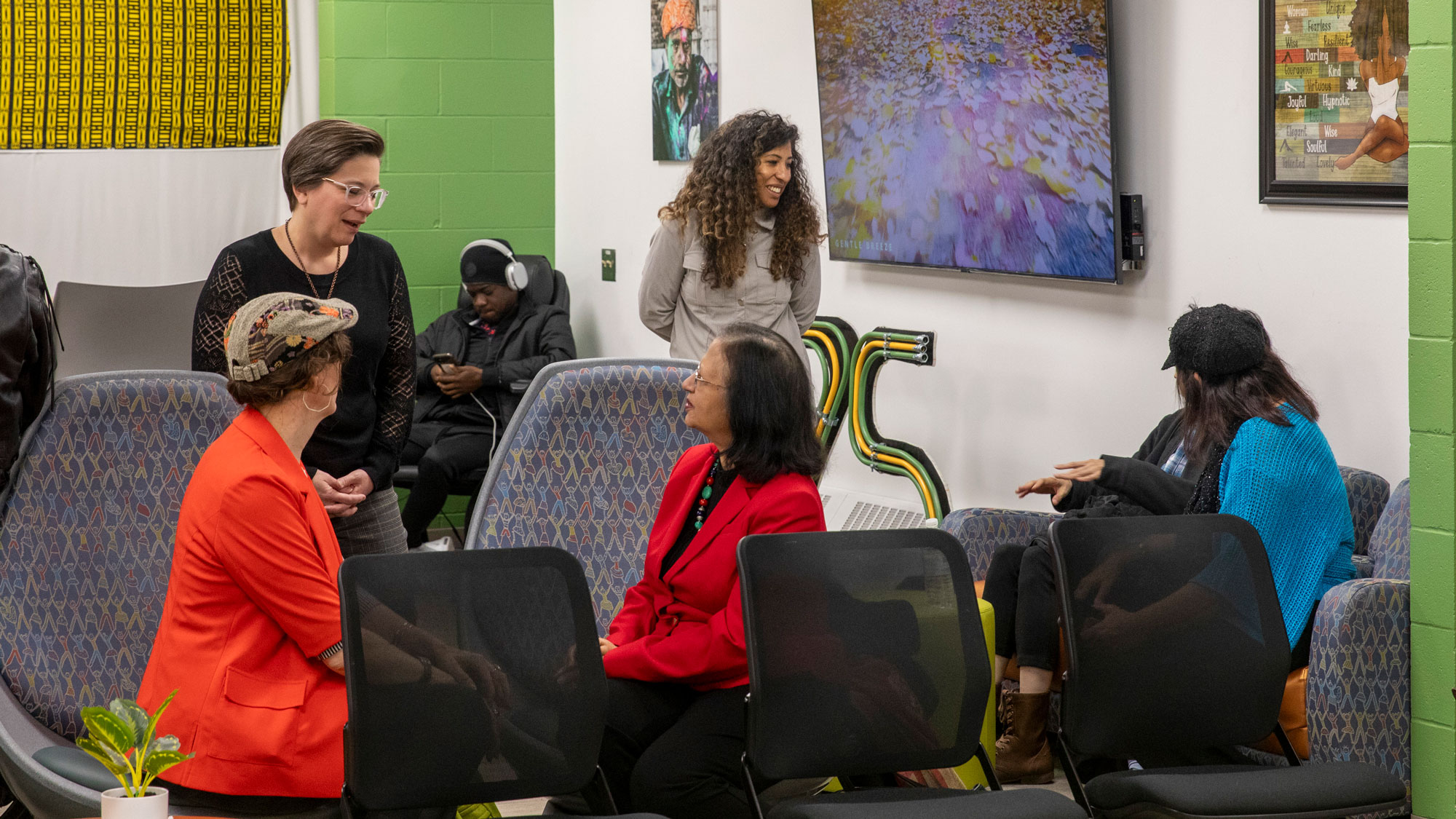
SCTCC welcomed Azania Tripp, Lyricality’s 2024 Artist in Residence, on Nov. 12 with a reception in the Multicultural Center and public unveiling of her exhibit.
The exhibit, titled “Okra and Indigo,” will be at the Multicultural Center through October 2025 and is supported by Lyricality, a Central Minnesota artists group. From Lyricality's description:
Azania Tripp’s Okra and Indigo thoughtfully engages with themes of food, culture, community, and historical trauma. The exhibition is inspired by the book High on the Hog by Jessica Harris and the accompanying TV series by the same name. The artist utilizes a combination of materials such as indigo cloth, jasmine rice, resin, and paper collage to highlight the importance of food as a symbol of survival, storytelling, and connection to ancestors. Azania uses storytelling to showcase food as both sustenance and a living archive of resilience, historical trauma, and our connection to the past through the beauty of shared memory, family, and survival.
Tripp was inspired after watching the Netflix documentary “High on the Hog,” based on the book High on the Hog: A Culinary Journey from Africa to America by Jessica B Harris. The documentary and book focus on the history of African American cuisine, starting with the knowledge brought to America during the transatlantic slave trade up until about ten years ago.

At that point, she had been making jewelry as an artistic outlet, and with the urge to grow her art along with inspiration from “High on the Hog,” “Okra and Indigo” began.
“I like listening to other stories to figure out who I am, so by learning about historical African American [chefs] and the significant food in our practice, I wanted to learn the differences,” said Tripp.
She started upscaling her art, because if she could do it on an earring, she knew she could apply the same skills to other surfaces. The first step was to build a table and chairs, because if her focus was food, she needed the gathering place.
The art in the “Okra and Indigo” exhibit ranges from chairs dedicated to African American chefs to collaged portraits. Each piece of art has extensive research attached to it: you will see a collaged chair dedicated to Hercules Posey, George Washington’s slave, alongside one to Edna Lewis, a 1995 James Beard winner.
Tripp is excited to have the exhibit at SCTCC. Two portraits feature SCTCC employees: Dr. Sangeeta Jha and Debra Leigh, who have been in her life for many years.

“They definitely are part of my development and the intercultural education that I received. I know that because they were so heavily involved, it makes me an effective artist and therapist,” she explained.
Jha was quick to notice the intersectionality that Tripp was bringing to her art. The name of her exhibit highlights both parts of who she is, and to be able to interview Jha as part of the project was something she was excited to do.
“She’s a self-taught cook, and the community work she does here is very much centered around food,” Tripp shared. “That’s a gift that she was very explicit in her narrative that she’s able to provide. It was a gift to talk to her and to highlight someone that I think isn’t always allocated a lot of political agency.”
The food history shared in “High in on the Hog” also gives a voice to stories that aren’t often shared. One of the phrases Tripp used was that food is transparent. You can’t ignore what recipe books and passed-down food secrets share: the displaced people during the transatlantic slave trade had a very professional level of agricultural knowledge.
“It’s about food, but it’s a story and something that’s passed on because we have to eat. Recipes cannot lie because they tell you where the food was grown. They tell you how things can taste,” Tripp asserted. “We still eat our stories and share space when we eat.”
The “Okra and Indigo” exhibit is located in Northway 1-313, the Multicultural Center, which is open from 8:00AM-4:30 PM. Enter the conference room area and find it in the first cube.